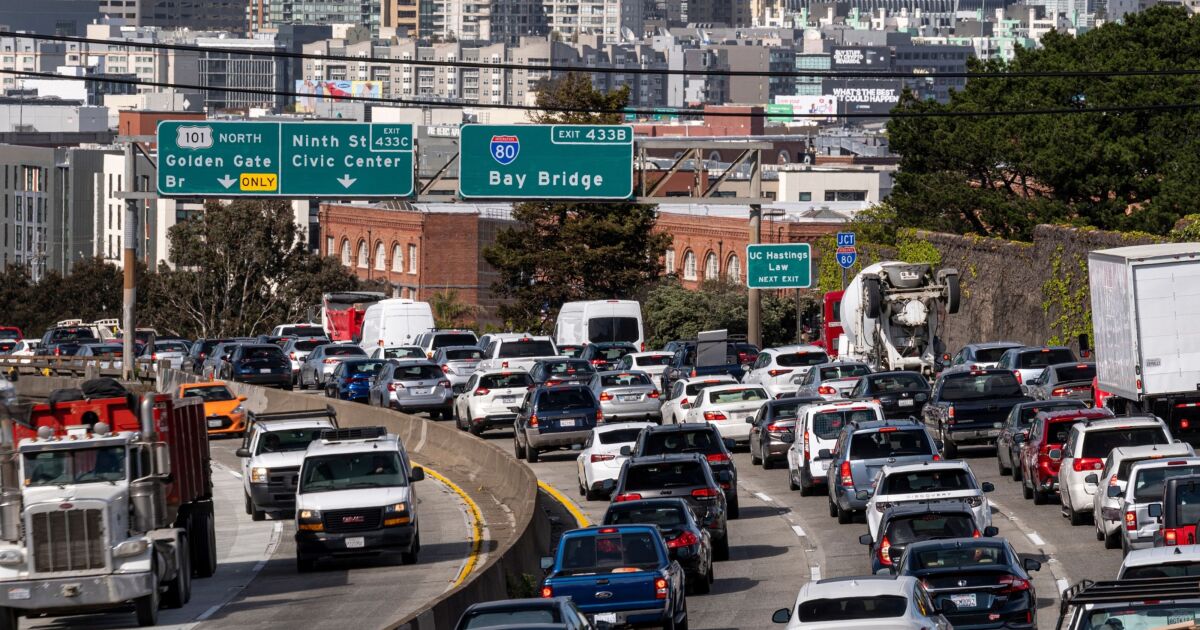Distracted driving at an all-time high: How insurers can respond

The COVID-19 pandemic has likely led to more distracted driving. April marks Distracted Driving Awareness Month and insurers have released data and studies that reveal what behaviors are leading to unsafe roadways.
In 2020, 38,824 people were killed in motor vehicle crashes on U.S. roadways, the highest it has been in about a decade, according to the National Highway Safety Administration. Speeding, alcohol and non-seat belt use fatalities increased and 3,142 people were killed by distracted driving.
Chris Hayes, assistant vice president of transportation and risk control at Travelers, says driving risk is getting worse and has been for the last 25 months as the COVID-19 pandemic has changed how people drive.
“People were working from home and there was a real sense that roads were empty and people tend to drive faster and take more risks [when there is less traffic] … It changed the way that people drove,” says Hayes.
Despite traffic density returning to pre-pandemic levels, risky behaviors are still happening.
“If you look at vehicle safety trends, we had about 10 years of consistent improvement … Things were getting better, all of that has been erased in the last two years,” says Hayes.
The Travelers Risk Index on distracted driving surveys 1,000 business executives and 1,000 consumers on driving risk. Respondents reported frequently or sometimes engaging in dangerous behaviors while driving, more than before the pandemic.
Before the pandemic, 19% of respondents reported texting or emailing while driving, now it’s 23%. Additionally, checking social media increased two percentage points to 15%, taking videos and pictures was 10% pre-pandemic and now it’s 12%, according to the Risk Index.
Kelly Hernandez, associate vice president of personal telematics at Nationwide, says young drivers, especially, have had a phone in their hand all their whole lives but the pandemic has increased phone addiction.
Nearly one-third of drivers believe it safe to hold a phone while driving, whether to text, call or use navigation, according to a study from Nationwide. The feeling is most prevalent amongst younger drivers. Only about 20% of Boomers think it’s safe to use a phone while driving.
The study of about 1,000 U.S. consumers who own a car was conducted by Edelman Data & Intelligence. It suggests that people believe other drivers are the cause of unsafe conditions. About two-thirds, 66%, of drivers say that holding a phone while driving is dangerous and over half, 51%, report doing it in the past six months.
One of the potential solutions to distracted driving is telematics programs, says Hernandez, adding that in 2020, Nationwide implemented an awareness program within its SmartDrive mobile app to show drivers how often they are distracted, where and the type of distraction.
By showing drivers how often they were distracted, Nationwide reduced distraction by nearly 10%, says Hernandez.
While telematics may have uses in making people aware of their distractions–it is not a whole solution. Hayes says that telematics is, “a bit of a chicken and an egg.”
“We tend to think of telematics as a safety solution but it is a tool … it is just collecting data by itself,” says Hayes. “It is the start of a solution.”
Hayes added that for telematics to be useful in preventing distracted driving behaviors, a company, for example, has to alter its operations to be safer including decisions to move people out of driving jobs if they’re participating in certain behaviors.
“Some people are good drivers and some don’t have the attention to be consistently good drivers,” says Hayes. “It is not a judgment on their personality or their person.”
Tim Grant, senior director of underwriting, auto vertical at LexisNexis says people mostly think about texting as a distracted behavior but it’s more than that.
“Distracted driving is anything that takes your eyes off the road and your cognitive focus off driving,” says Grant. “People don’t understand the impact and the danger, how easily a slight break in focus [can lead to something happening.]”
In February 2022, distracted driving increased, reaching one minute and 38 seconds per every driving hour, according to the 2022 U.S. Distracted Driving Report from Cambridge Mobile Telematics. The report analyzed driving behaviors between 2019 through 2022. It suggests that distracted driving was 30% higher in February 2022 than in February 2020.
“The sad thing is, most of these could have been prevented,” says Hayes. “Drive sober, slow down and leave the phone out of reach.”







